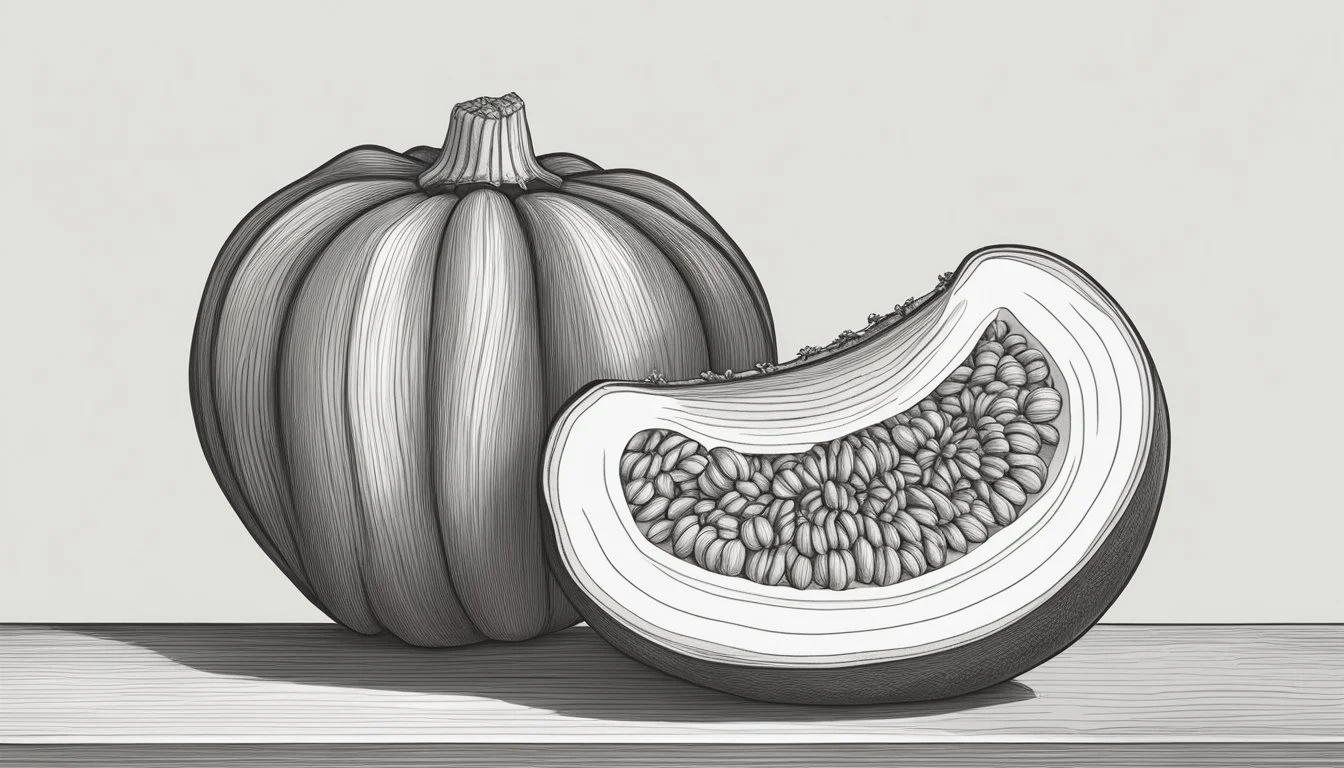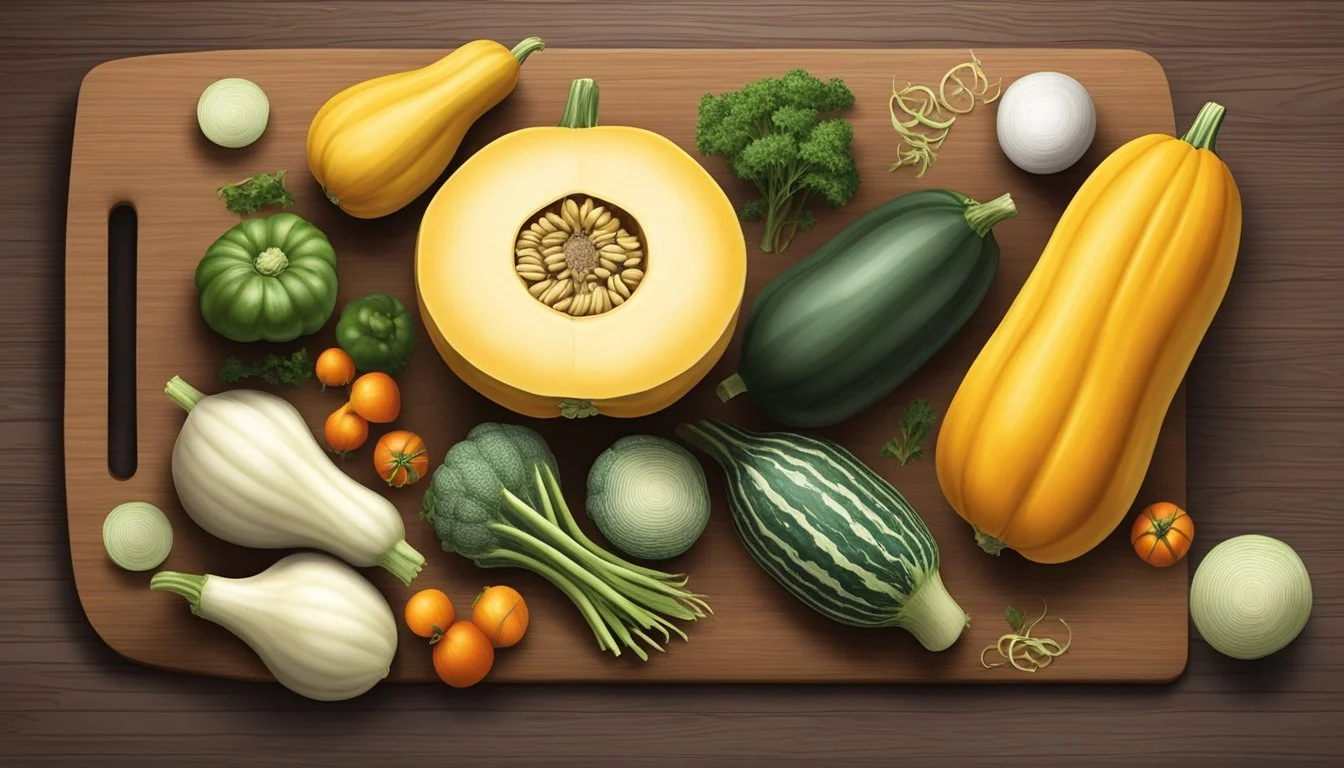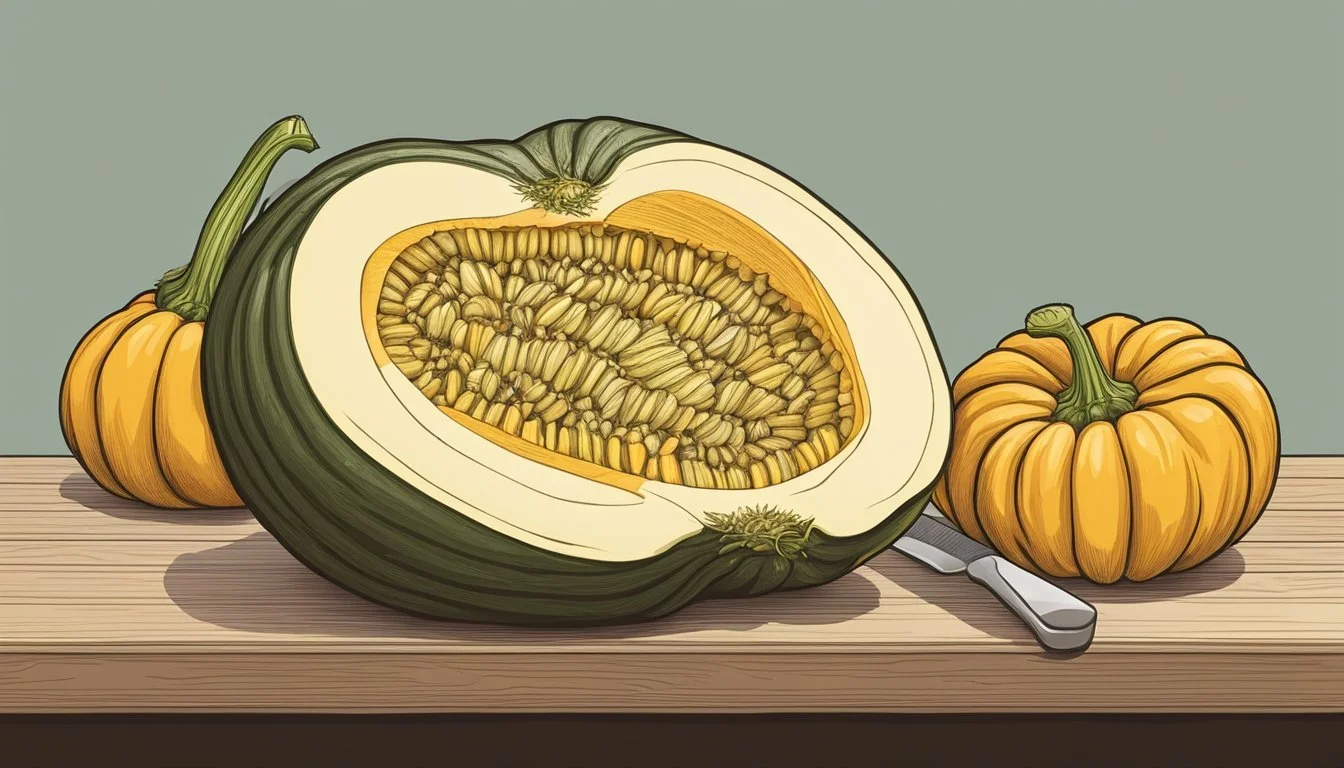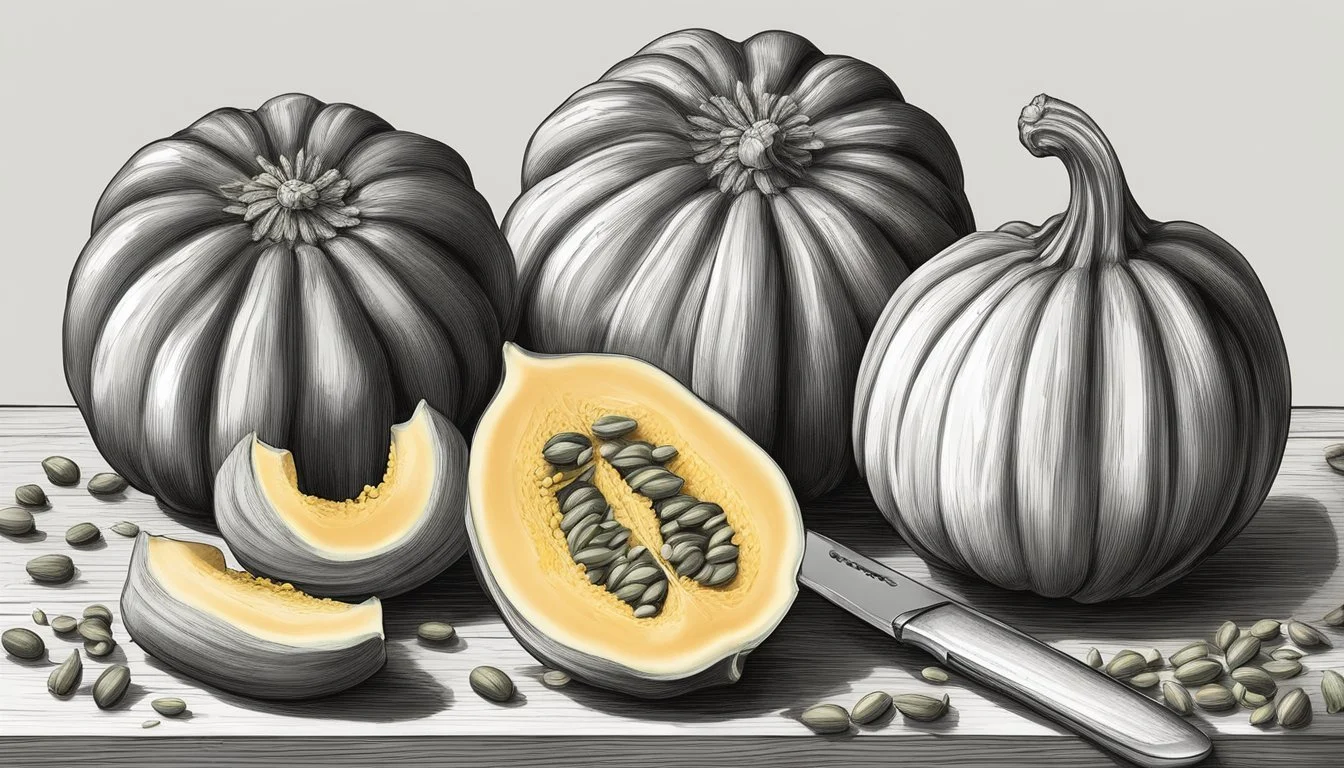How do you eat a marrow squash?
Simple Steps for Preparing and Enjoying This Versatile Vegetable
Marrow squash, often referred to as vegetable marrow, is a type of summer squash that boasts a mild flavor, making it a versatile addition to many dishes. The texture of marrow squash is unique; its flesh is characteristically porous, which allows it to absorb a wonderful array of flavors from the ingredients it's cooked with. When prepared, it often acquires a buttery-rich texture that is both pleasing to the palate and satisfying in terms of mouthfeel.
In terms of nutrition, marrow squash is a beneficial vegetable to incorporate into a diet. It is low in calories yet rich in a variety of nutrients. The squash provides a good source of Provitamin A, Vitamin K, Vitamin C, and B group vitamins such as folate, thiamin, and riboflavin. Additionally, it contains minerals like iron, potassium, and magnesium, and is a good source of dietary fiber.
When it comes to eating marrow squash, one can enjoy both its seeds and flesh, depending on the squash's maturity at harvest. The manner of cooking marrow squash is similar to that of other squashes. It can be roasted, baked, or simmered, with seasoning added to enhance its flavor. The key is to cook it in a way that complements its natural tendency to absorb flavors while maintaining its nutritious value.
Nutritional Profile
Marrow squash comprises a variety of essential vitamins and minerals, contributing beneficially to one’s diet. It is particularly noted for its low calorie content and richness in several key nutrients.
Essential Vitamins and Minerals
Marrow squash is an excellent source of several vitamins and minerals, pivotal for maintaining good health. Specifically, it contains:
Vitamins: Richness in vitamin C is one of its hallmarks, alongside notable amounts of vitamin K and B group vitamins such as folate, thiamin, and riboflavin.
Minerals: It provides potassium, magnesium, and iron among its mineral content, making it a well-rounded addition to a balanced diet.
Health Benefits
The nutrients found in marrow squash have a wide range of health benefits, which include:
Heart Health: The presence of potassium in marrow squash supports cardiovascular health by aiding in the regulation of blood pressure.
Digestive Wellbeing: Its high dietary fiber content helps to improve digestion and promote regularity.
Bone Strength: Vitamin K and magnesium contribute to the development and maintenance of strong, healthy bones.
Antioxidant Properties: Vitamin C not only supports the immune system but also acts as an antioxidant, protecting cells from damage by free radicals.
Culinary Uses
The versatility of marrow squash is best explored through various cooking methods and flavor pairings that highlight its mild taste and ability to absorb flavors.
Preparing Marrow Squash
Before cooking, marrow squash should be washed and halved lengthwise. The seeds are then scraped out with a spoon, much like one would prepare a zucchini. Depending on the recipe, the skin can be either left on or peeled off. If the squash is particularly large, removing the skin may be preferable as it can be tough.
Cooking Methods
Marrow squash can be roasted, baked, fried, or steamed. Roasting in olive oil enhances its flavors and gives it a tender texture. To roast, preheat the oven to 190ºC, slice the marrow into crescents, toss with olive oil, and cook until tender. For a different texture, marrow can also be fried; it'll absorb the oil and accompanying flavors, becoming rich and creamy.
Recipe Suggestions
Marrow Soup: A creamy soup can be prepared by blending cooked marrow with stock and cream.
Stuffed Marrow: A savory option involving hollowed marrow filled with a mixture of seasoned ground meat, rice, and spices, then baked.
Marrow Curry: Pieces of marrow can be added to curries, where they take on the spicy and aromatic flavors of the curry powder and other ingredients.
Seasoning and Flavor Pairing
Due to its neutral taste, marrow pairs well with both sweet and savory flavors. It can absorb the nuances of garlic, herbs, and spices used in recipes. For sweetness, a sprinkle of sugar can accentuate the marrow's flavors, whereas for savory dishes, olive oil, butter, and cream can enhance its texture and taste. Bitter elements should be used sparingly to prevent overpowering the squash's delicate flavor.
Growing and Harvesting
Growing marrow squash is a rewarding process that entails understanding the needs of the plant in terms of planting, care, and harvesting to ensure a bountiful yield. Proper storage and preservation methods allow gardeners to enjoy their harvest for an extended period.
Planting and Care
Marrow squash, also known as courgette or zucchini, requires a sunny location with shelter from strong winds. The soil should be well-draining, rich in organic matter, and have a pH between 6.0 and 7.0. Planting should be done when the soil temperature consistently reaches 70ºF (21ºC), indicative of the beginning of summer for summer squash varieties or after the last threat of frost has passed. One can start seeds indoors in pots or containers 3-4 weeks before the last frost to transplant seedlings later.
Spacing: Plant seeds ½-1 inch (13-25 mm) deep with successful seedlings thinned to at least 36 inches (90 cm) apart.
Watering: Ensure consistent moisture, especially during the flowering and fruiting stages.
Feeding: Apply a balanced fertilizer once the plants are established and again when they start to flower.
Support: For container gardens or limited spaces, a frame can assist in supporting the plant as it grows.
Harvesting Marrow Squash
The timing of harvesting marrow squash depends on the variety being grown. For summer squashes like zucchini and courgette, they should be picked when they are small to medium in size to ensure tenderness and flavor. Regular harvesting encourages further production. Winter squashes require a longer growth period and should be left on the vine until they mature fully, which can be identified by the hardening of the outer skin and the dying back of the vine.
Summer Squash: Harvest when 6-8 inches (15-20 cm) in size.
Winter Squash: Harvest before the first hard frost or when the plants die back naturally.
Storing and Preservation
After harvesting, summer squashes should be used within a week or two for optimum freshness. However, they can also be stored in the refrigerator for short periods. Winter squashes with their thicker skin can be stored in a cool and dry place for several months. If there's an excess of squash, whether summer or winter varieties, they can be preserved through freezing. Squash should be blanched before freezing to preserve texture and flavor, and they can be kept in the freezer for up to a year.
Varieties and Selection
When selecting marrow squash, one should take into account the variety, size, texture, and color to ensure it meets their culinary needs. The ideal marrow should have a firm texture, vibrant color, and be free of soft spots.
Choosing the Right Marrow
The correct selection of marrow squash greatly depends on its intended use in the kitchen. One should look for marrows that are heavy for their size, indicative of a juicy, dense flesh. The skin should be glossy and free of blemishes or soft spots, which can signal spoilage. The texture of the marrow's skin can vary from smooth to slightly rough, yet it should always feel firm to the touch. A bland taste is often expected from larger marrows, while smaller ones tend to be more flavorful.
Marrow Squash Varieties
Marrow squashes, part of the genus Cucurbita, come in a range of varieties, each with distinct characteristics. The two species commonly associated with marrow are Cucurbita maxima and Cucurbita pepo.
Vegetable Marrow: Typically elongated with smooth, dark green skin, this variety can grow up to 18 inches long. Its flesh is creamy white and moderately dense, providing a rather bland taste.
Butternut Squash: (how long does butternut squash last?) Though not a true marrow, butternut squash is closely related and shares the genus Cucurbita. It has a smooth, thin skin that is tan in color and easible edible when roasted. The flesh is sweet, orange, and has a smooth texture.
When considering marrow squash for purchase, it is vital to recognize that while all varieties have edible flesh and seeds, the skin of some may be too tough for consumption in larger, mature specimens. Each variety brings a unique flavor and texture profile to a dish, allowing for versatility in the kitchen.
Cultural Significance and History
The marrow squash is not only a versatile ingredient in diverse culinary traditions but also carries historical importance and medicinal uses across cultures.
Origins of Marrow Squash
Marrow squash, a type of summer squash belonging to the Cucurbitaceae family, is thought to have originated in Central America. Indigenous peoples domesticated marrow and cultivated it for centuries before it was introduced to Europe in the 16th century by Spanish explorers. The vegetable gained prominence for its adaptable nature to different soils and climates, allowing it to become a staple in various regions.
Marrow in Different Cuisines
Marrow squash is celebrated for its bland taste, which makes it a versatile vegetable in cooking. It absorbs flavors well, contributing to its flavourful presence in diverse dishes.
In Italian cuisine, it’s often used in stews and stuffed with a variety of fillings.
The British incorporate it into savory dishes, highlighting its texture alongside rich spices and meats.
In Indian cooking, marrows are seasoned with spices, transforming them into vibrant side dishes.
The porous flesh of the marrow squash has been utilized in these various cuisines to soak up spices and seasonings, providing a unique taste experience.
Marrow in Folk Medicine
Traditional folk medicine has also recognized marrow squash for its health benefits. Rich in cucurbitacins, compounds thought to have medicinal properties, marrow has been used by Native Indians and other cultures in natural remedies. It's been traditionally incorporated into diets to promote overall health and well-being, with some cultures using it to treat ailments related to the stomach and digestion. The vegetable's nourishing qualities have been appreciated in the context of both food and medicine for generations.
Connecting with Others
When it comes to enjoying marrow squash, engaging with a community of enthusiasts can enrich the experience. Sharing recipes and joining events foster a deeper appreciation for growing and cooking this versatile vegetable.
Sharing Recipes and Tips
Enthusiasts often exchange their favorite marrow squash recipes through channels like online forums or newsletters. These recipes range from simple roasted dishes (What wine goes well with roasted dishes?) to complex stews and bakes. One may find instructions for preparing marrow squash with various seasonings to enhance its mild flavor, or techniques to achieve a buttery-rich texture. Tips shared by the community can include when to harvest the squash for optimal seed edibility or how to store it properly.
To streamline sharing, individuals can:
Subscribe to a newsletter: Stay updated with the latest marrow squash recipes and growing tips directly in one's inbox.
Join online cooking communities: Participate in discussions and recipe exchanges on social media platforms or cooking websites.
Community and Events
Local gardening clubs and food festivals offer platforms for marrow squash enthusiasts to connect and share their passion. These events are opportunities to:
Learn to grow marrow squash: Gather information on the best practices for cultivating marrow squash from experienced growers.
Participate in cooking demonstrations: See firsthand how to cook marrow squash and taste new recipes.
Such community interactions often result in the circulation of creative recipes, essential growing tips, and the fostering of meaningful connections among individuals with shared interests in the culinary potential of marrow squash.
Tips for Consuming
Marrow squash offers a versatile range of culinary uses, from raw preparations to inventive cooking techniques that make use of the entire vegetable.
Eating Marrow Squash Raw
Marrow squash can be a crisp and refreshing addition to many dishes when eaten raw. They should select a young marrow squash from the grocery store for optimal taste and texture. The flesh is milder and the seeds are softer, making it suitable for raw consumption. It can be finely diced or shredded into salads, providing a light, crunchy element.
Making Best Use of the Skin and Seeds
The skin of the marrow squash is edible and contains valuable nutrients. It can be left intact when cooking to preserve these benefits and to provide a textural contrast. However, they should ensure that the squash is well-cleaned before consumption. As for the seeds, they can be roasted for a nutritious snack, or if tender, they can be left inside when the squash is stuffed and cooked, allowing them to absorb the flavors.
Additional Considerations
When incorporating marrow squash into one's diet, it is essential to be aware of potential allergens and the times when consumption might be inadvisable. Understanding these specifics helps ensure the dietary choice aligns with individual health needs and preferences.
Possible Allergens and Interactions
Marrow squash, though not a common allergen, can contain cucurbitacins, which are chemicals that cause vegetables to taste bitter. While a mild bitterness is typical, an overly bitter taste can indicate high cucurbitacin levels, which could cause stomach discomfort. Individuals who have experienced adverse reactions to other members of the Cucurbitaceae family, like cucumbers or melons, should approach marrow squash with caution as these could signify an allergenic response.
Additionally, marrow squash is rich in Provitamin A, beneficial for vision and immune function. However, it is worth noting that excess intake of these nutrients, albeit rare, could lead to health complications. Always consider dietary balance to avoid potential interactions with pre-existing conditions or medications.
When to Avoid Marrow Squash
There are certain conditions when marrow squash should be avoided or consumed with care:
Anemia: Marrow squash contains a notable amount of iron, which is essential in combatting anemia. Yet, for individuals with conditions like hemochromatosis, excessive iron intake can be problematic.
Health Benefits Triangle: While marrow squash is generally associated with health benefits such as low calories and a rich nutrient profile, its consumption might not be suitable for everyone. For instance, pregnant women or individuals on specific medication regimens should consult a healthcare professional prior to introduction into their diet.
It is important for consumers to be informed and to listen to their body’s response to new foods, including marrow squash.










